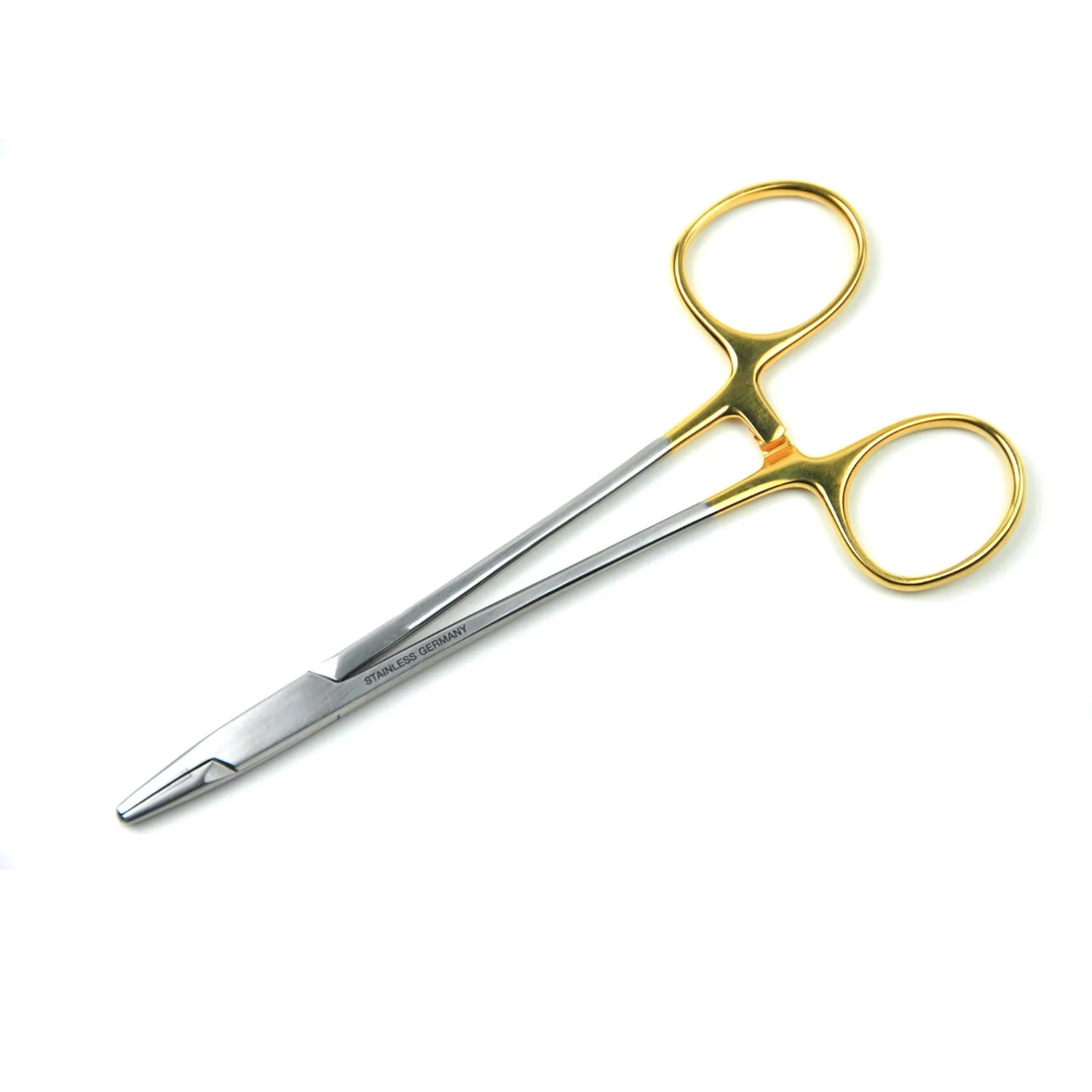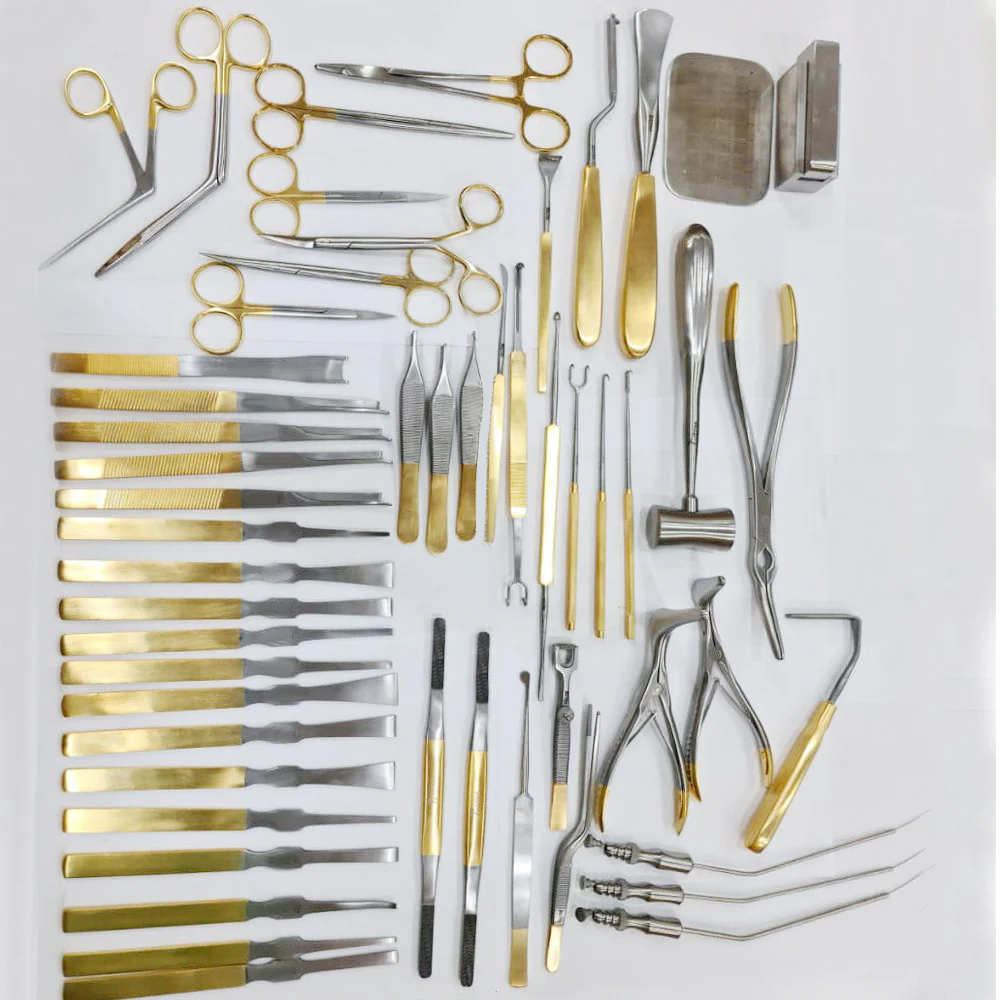Surgical precision and effectiveness largely depend on the quality and suitability of the instruments used. Among these, the Neivert needle holder, nasal needle holder, and rhinoplasty needle holder stand out for their specialized roles in delicate and complex surgical procedures. This article delves into the characteristics, uses, and importance of these needle holders in the medical field, particularly in rhinoplasty and nasal surgeries.
Understanding the Neivert Needle Holder
The Neivert needle holder is a specialized surgical instrument named after its developer. It is primarily used in delicate suturing, often in plastic and reconstructive surgery. The design of the Neivert needle holder features a unique locking mechanism that ensures a firm grip on the needle, preventing it from slipping during suturing. This precision is crucial for ensuring that sutures are placed accurately, minimizing tissue trauma and promoting better healing.
The handle of the Neivert needle holder is typically ergonomically designed to provide comfort and control to the surgeon. This is especially important during long and intricate procedures where hand fatigue can be a significant issue. The holder’s tips are often finely serrated, providing an enhanced grip on the needle without causing damage to it.
Nasal Needle Holder: A Specialized Tool for Nasal Surgeries
Nasal needle holders are designed specifically for use in nasal surgeries. These surgeries often require a high degree of precision due to the complex anatomy of the nasal passages and the delicate nature of the tissues involved. The nasal needle holder is crafted to meet these challenges, featuring a slender, elongated design that allows surgeons to navigate the narrow and intricate spaces within the nasal cavity.
One of the key features of the nasal needle holder is its fine, delicate tips. These are designed to hold the needle securely without causing additional trauma to the delicate nasal tissues. The holder often incorporates a locking mechanism similar to that of the Neivert needle holder, ensuring that the needle remains stable during suturing.
Nasal needle holders are used in various procedures, including septoplasty, turbinate reduction, and other surgeries aimed at correcting nasal obstructions or deformities. Their precise design helps surgeons perform these procedures with minimal invasiveness, reducing the risk of complications and promoting faster recovery.

Rhinoplasty Needle Holder: Essential for Cosmetic Nasal Surgery
Rhinoplasty, commonly known as a nose job, is a surgical procedure aimed at reshaping the nose for aesthetic or functional purposes. Given the high demand for rhinoplasty and the critical nature of the outcomes, the instruments used in this surgery must be of the highest quality and precision. The rhinoplasty needle holder is one such instrument, specifically designed to meet the unique demands of this procedure.
The rhinoplasty needle holder is characterized by its precise control and delicate handling. The instrument’s design allows for intricate maneuvering, which is essential when working on the fine structures of the nose. Like the nasal needle holder, the rhinoplasty needle holder features a slender and elongated design, facilitating access to the deep and narrow spaces of the nasal structure.
In rhinoplasty, achieving the desired aesthetic outcome often involves intricate suturing and tissue manipulation. The rhinoplasty needle holder’s fine tips and secure locking mechanism ensure that the needle remains stable, allowing for accurate and delicate suturing. This precision is crucial for ensuring that the final result is both aesthetically pleasing and functionally sound.
Importance of Quality in Surgical Instruments
The quality of surgical instruments like the Neivert needle holder, nasal needle holder, and rhinoplasty needle holder is paramount in ensuring successful surgical outcomes. High-quality instruments are made from durable materials, typically stainless steel, which is resistant to corrosion and can withstand repeated sterilization without compromising performance.
Precision manufacturing processes ensure that these instruments meet exacting standards, with finely honed tips and secure locking mechanisms that provide reliable performance in the operating room. Surgeons rely on these tools to perform their tasks with confidence, knowing that the instruments will not fail or cause additional trauma to the tissues.
Moreover, the ergonomic design of these instruments is crucial in preventing hand fatigue and ensuring that surgeons can maintain control and precision throughout lengthy procedures. Comfortable handles and balanced weight distribution allow for better maneuverability and reduced strain on the surgeon’s hands.
Advancements in Surgical Instrumentation
The field of surgical instrumentation is constantly evolving, with advancements aimed at improving the precision, safety, and effectiveness of surgical procedures. Innovations in materials science, manufacturing techniques, and ergonomic design have all contributed to the development of superior surgical instruments.
For instance, modern needle holders may incorporate advanced materials like tungsten carbide inserts in the tips, providing an even more secure grip on the needle. These inserts are extremely durable and offer enhanced precision, making them ideal for delicate procedures like rhinoplasty.
Additionally, advancements in sterilization techniques ensure that instruments can be thoroughly cleaned and sterilized between uses, reducing the risk of infection and ensuring patient safety. The development of single-use instruments has also provided an alternative for certain procedures, ensuring that instruments are always sterile and ready for use.
Conclusion
The Neivert needle holder, nasal needle holder, and rhinoplasty needle holder are indispensable tools in modern surgical practice, particularly in the fields of plastic and reconstructive surgery. Their specialized designs and high-quality construction ensure that surgeons can perform delicate and intricate procedures with the precision and control needed for successful outcomes.
As surgical techniques continue to evolve, the development of advanced surgical instruments will remain a critical area of focus. Ensuring that these tools meet the highest standards of quality and performance is essential for the continued advancement of surgical care and the achievement of optimal patient outcomes.
By understanding the unique characteristics and applications of these needle holders, medical professionals can make informed choices about the instruments they use, ultimately enhancing the quality of care provided to patients. Whether in nasal surgeries or rhinoplasty, the right needle holder can make a significant difference in the precision, effectiveness, and success of the procedure.

